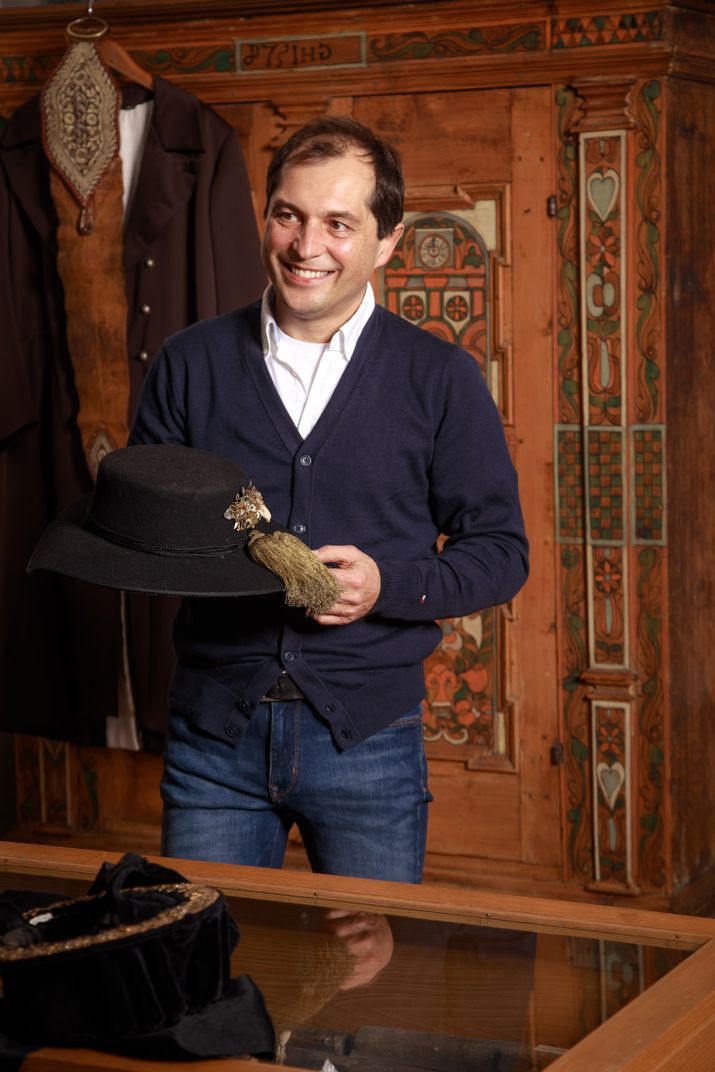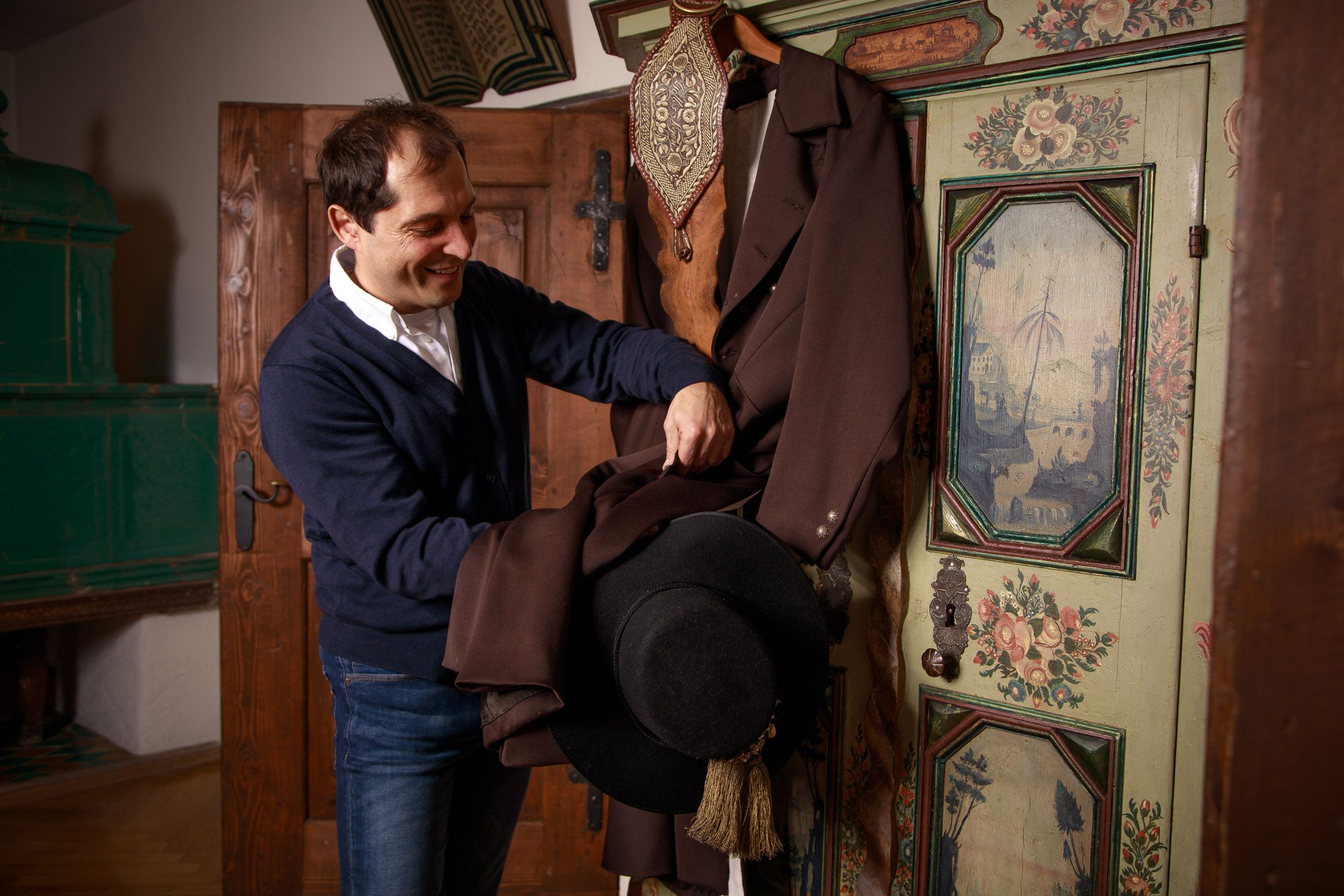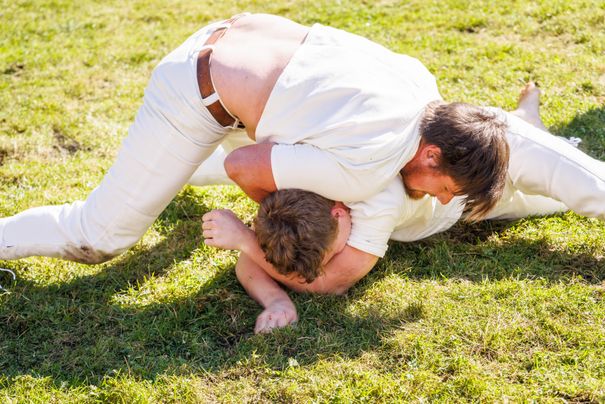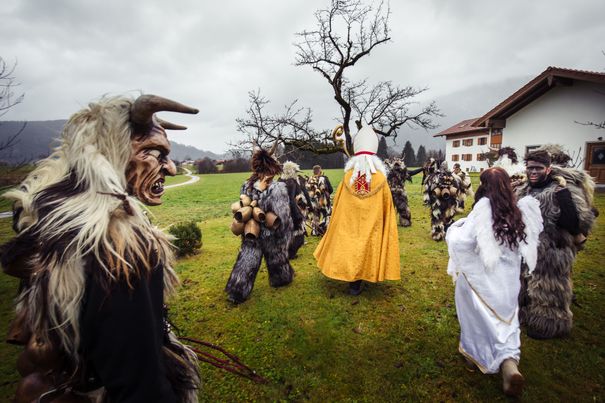Important information at a glance
Traditional dress used to mainly be an expression of status and character. It was restricted to one region and the way people typically dressed there. The gentlefolk set the tone in terms of fashion. The simple folk followed suit. The traditional dress for different societies that we’re familiar with today developed with the foundation of traditional dress associations at the end of the 19th century. The various forms of old traditional peasant costumes mainly live on in historic traditional dress groups.
Christian Burghartswieser grew up in lederhosen. Today, the 44-year old is the regional traditional dress officer of the “Gauverband 1”, which all the traditional dress associations around Traunstein belong to, and also a member of one such historic group, the D`Rauschberger. His knee-length, heavy frock coat is reminiscent of French uniforms. It’s made of wool, lined with linen and fitted with pocket buttons. The side pockets face backwards. Hence the expression: “Sitting on his money,” explains Christian Burghartswieser. With the coat he wears a shirt, deerskin breeches, white socks and a hat whose interior brim is decorated with his grandmother’s old hand-stitched embroidery. He wears a broad ornamental belt with the finest quill embroidery around his stomach. These kinds of belts were used by farmers as wallets, so that they always had their possessions on them. “Where else would they have left them when they were working in the fields? It wasn’t safe in the house,” explains Burghartswieser.



